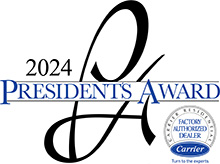
Now that we have had our first taste of warm weather and the grass is growing and flowers are blooming, our thoughts are turning to summer.
And if you are smart, your thoughts are turning to making sure your air conditioner (AC) is functioning properly.
So how do air conditioners even work? What happens when you flick that switch? Air conditioners don’t bring cool air into your home. They use chemicals (refrigerant) to capture heat from inside your home and send it outside.
A standard AC unit has four primary components: a compressor, a condenser, an expansion device and an evaporator. The compressor and condenser are located outside the house, in what you might refer to as “the AC unit.”
The compressor is the heart of the system. It circulates the refrigerant through the system. The refrigerant enters the compressor as a cool, low-pressure gas and leaves as hot, high pressure gas. The high pressure gas flows into the condenser which cools the gas, condensing it into a liquid. This liquid then goes into the expansion device which drops the pressure as it enters the evaporator. The evaporator typically sits above the furnace. The blower motor in the furnace delivers the warm air in the home to the evaporator which absorbs that heat. As heat is absorbed by the evaporator, the refrigerant inside “evaporates” from a liquid to a gas. The gas is then sucked back into the compressor and the process repeats over and over again until the temperature in the home reaches the desired level set on the thermostat.
There are a few things you can do to maintain your air conditioner. The first is to make sure your air filter is clean. One or two inch thick filters should be changed monthly. Thick media filters (4” to 6” thick) should be changed every six months and the cells in an electronic air cleaner should be cleaned in your dishwasher monthly. Second, keep bushes and plants away from the condensing unit. There should be 18” of free space around the condenser to maintain proper and efficient operation. Finally, the condenser coils should be cleaned with a garden hose. Be careful not to bend any of the coil fins.
We highly recommend that you have a professional maintain your AC unit once a year. Make sure the maintenance includes the following:
Clean the condensing coil
Check for proper refrigerant charge
Check the electrical contactor (the relay that turns the compressor on and off)
Test the starting capability of the compressor
Test operating refrigerant pressures
Test the condenser fan motor
Check safety controls
Check the air filter
Test voltage and amp draw of the compressor, condenser fan and blower motors
Check the thermostat
Check the air flow through the furnace
Next time, we’ll discuss things you can do to make sure your air conditioner runs more efficiently, and what you can do to save energy costs.



